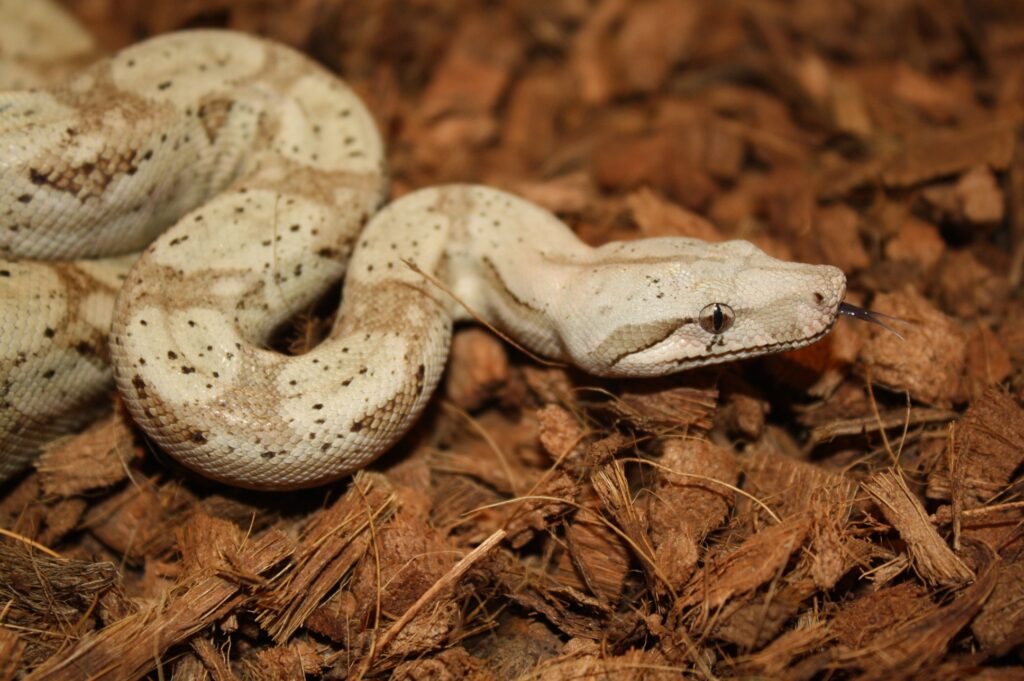The Hog Island Boa Constrictors (Boa imperator) are a non-venomous reptile species belonging to the family Boidae. It is a subspecies of the Boa constrictor and is known for its smaller size and unique appearance. Below is the requested information about the Hog Island Boa:
Synonym
- Boa constrictor imperator (LINNAEUS, 1758)
Common Names
The Hog Island Boa is commonly known by the following names:
- Hog Island Boa
- Hog Isle Boa
- Hog Island Ground Boa
Natural Distribution
The Hog Island Boa is endemic to the Hog Islands, a small group of islands located off the eastern coast of Belize in Central America. These islands include Cayos Cochinos and Cayo Menor. It is not found in any other location, making it a highly localized species.
Conservation Status
- CITES Appendix II
Hog-Islands Boa imperator Cayo Cochinos subpopulation has most recently been assessed for The IUCN Red List of Threatened Species in 2018. The main threats to this species are habitat loss, illegal collection for the pet trade, and potential impacts of introduced species. Efforts are being made to conserve and protect the remaining population.
Characteristics
Size: The Hog Island Boa is one of the smaller subspecies of Boa constrictor, with adult individuals typically reaching lengths of 4 to 5 feet (1.2 to 1.5 meters).
Coloration: They have a unique and distinct color pattern, characterized by a light gray or brownish background color with dark brown or black markings. The markings can vary in pattern and intensity between individuals.
Body Shape: They have a robust and muscular body, well-suited for their ground-dwelling lifestyle.
Scales: The scales of the Hog Island Boa are smooth and glossy.
Head and Eyes: They have a distinct triangular-shaped head and relatively small eyes compared to their body size.
Hog Island Boa Gallery












References
- Hog-Islands Boa, Boa imperator (Cayo Cochinos subpopulation), The IUCN Red List of Threatened Species (accessed online 2023).
- McDiarmid, R. W., Campbell, J. A., & Touré, T. A. (1999). Snake Species of the World: A Taxonomic and Geographic Reference. Vol. 1. Herpetologists’ League.
- Hedges, S. B., Marion, A. B., Lipp, K. M., Marin, J., & Vidal, N. (2014). A taxonomic framework for typhlopid snakes from the Caribbean and other regions (Reptilia, Squamata). Caribbean Herpetology, 49, 1-61.
- Conant, R., & Collins, J. T. (1991). A Field Guide to Reptiles and Amphibians: Eastern and Central North America. Houghton Mifflin Harcourt.
- Geology and Terrestrial Flora and Fauna of Cayos Cochinos, Honduras – Accessed Online (2016-3-29)
- The Hog Island Boa: squeezed to the brink of extinction – Accessed online (2016-3-19)
- Convention on International Trade in Endangered Species of Wild Fauna and Flora (CITES) – Appendices I, II and III (Accessed Online, 2017)
